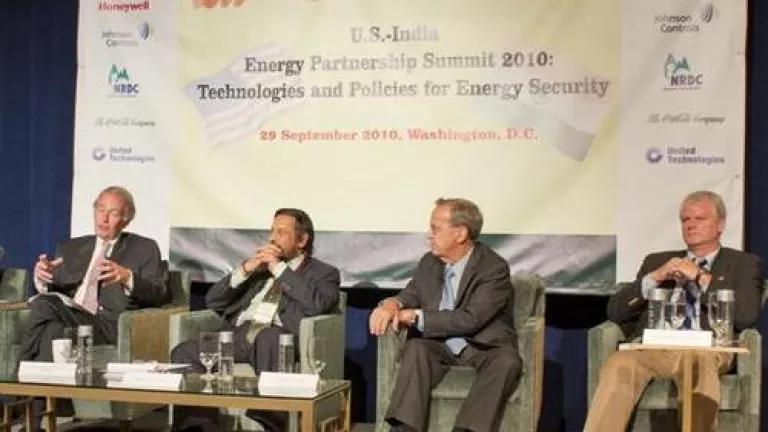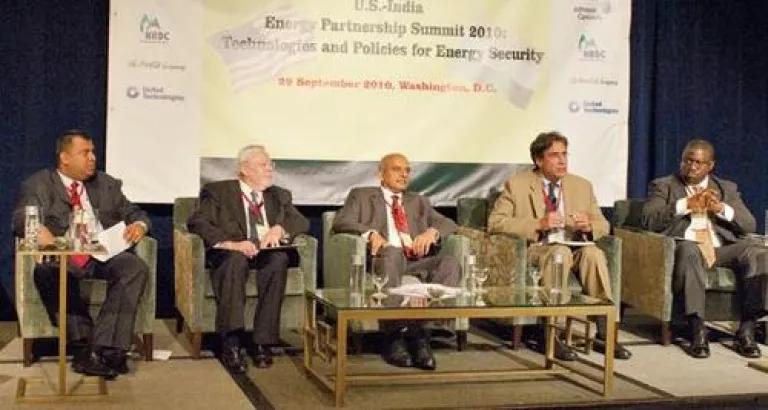
At the second annual US-India Energy Summit, leaders from the world’s two largest democracies met in Washington D.C. last week to further advance cooperation on clean energy. Organized by The Energy and Resources Institute (TERI) and Yale University, the Energy Summit, focused on President Obama’s November visit to India. Since last year’s summit, significant progress has been made in establishing the groundwork for US-India clean energy cooperation, however, many experts noted that much more needs to be done. As this strategic partnership grows and gains shape, it could be a model for the world.
While the drivers for clean energy may be different, such as providing modern electricity to 400 million people in India and phasing out dirty old coal plants in the US, experts agreed that the US-India relationship is vital to solving global energy needs and combating climate change. NRDC was pleased to be a co-sponsor of the Summit and my colleagues Jacob Scherr, Jake Schmidt, Heather Allen, and I had the opportunity to participate with over 200 high level government officials, business leaders, and academics. The Energy Summit brought together officials from both countries – such as Representative Ed Markey, Special Envoy Todd Stern, and White House Scientist John Holdren from the U.S., and Ambassador Meera Shankar, Electricity Chair Premod Deo, and HSBC’s Naina Lal Kidwai from India.
Calling India and US “natural allies,” Todd Stern announced that the two countries are ramping up cooperation on clean energy. For example, the two governments are working to implement the memorandum of understanding from Prime Minister’s state visit to Washington last fall by designing scientific research and deployment of clean energy projects. The two governments are developing the so-called Program to Accelerate Clean Energy (PACE), which will receive $50 million over five years in US funding, with an equal amount of Indian funding. These projects focus on energy efficiency, solar, wind, and biofuel development. Dr. Pachauri aptly stated the significance of this partnership, “The answer is not only in science and technology, but policies that bring about desirable outcomes.”
Jacob Scherr highlighted the considerable progress that has been made over the last year in the development of new cooperative programs between the United States and India on clean energy, including about $60 million for the US Agency for International Development (USAID) projects on energy efficiency and renewables. He urged the two governments to provide much more information about these programs moving forward and to seek broad participation from both societies in their implementation.
Adding private sector voices, HSBC India’s Naina Lal Kidawi, summarized the critical need for building efficiency considering that India builds the equivalent of one Chicago every year. Johnson Control’s Clay Nesler also expressed enthusiasm about their growing energy efficiency projects in India, including upgrading commercial buildings in Mumbai.
In addition to increasing transparency and involving a broader range of stakeholders as discussed by the experts, increased on the ground programs, such as the successful USAID ECO-III program on energy efficiency, are also critical to transforming the US-India relationship. The financing, policy, and technology to support these projects and partnerships also need to be identified in the lead up to President Obama’s visit.

Looking to President Obama’s November trip, clean energy will be a major area of discussion, given both nations’ energy demands and the global climate change challenge. The US-India partnership must be a comprehensive strategic partnership that meets the needs of both governments and provides the foundation for businesses and organizations to partner on broad-scale development and deployment of efficiency, wind turbines, and photovoltaic panels. The US-India partnership is in the counties’ own interests, but it also crucial to global clean energy solutions.
(Photos courtesy of TERI)